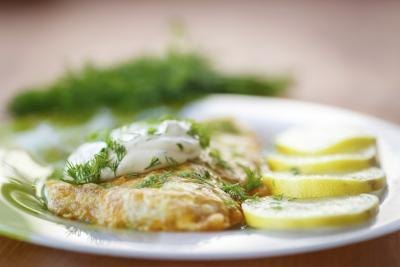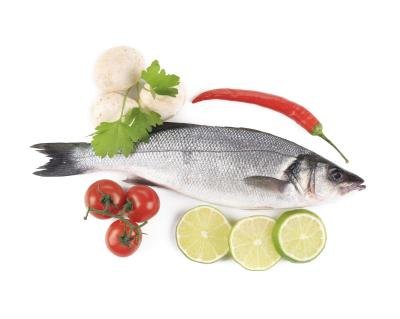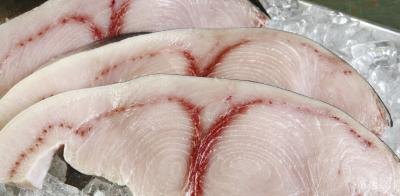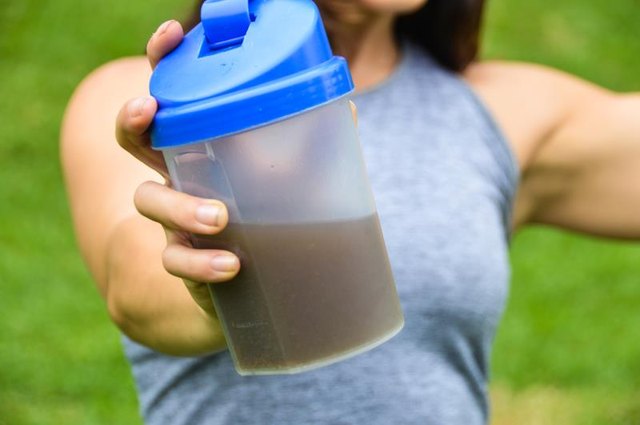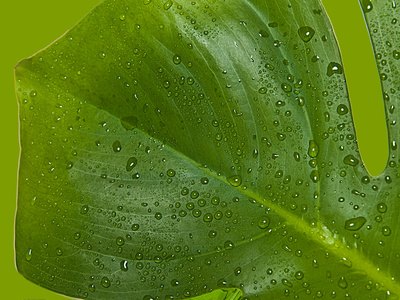1.
R. Houwink and G. Salomon, Adhesion and adhesives. Vol. 1 Elsevier Co., N.Y. (1965).
2.
I. Skeist, Handbook of adhesives, 2nd ed.. Van Nostrand- Reinhold, N.Y. (1975).
3.
K.V. Sarkanen and C.H. Ludwig, ed., Lignins — occurrence, forma tion, structure and reactions, Wiley-Interscience, N.Y. (1971).
4.
W. Schweers, Utilization of lignins isolated under mild conditions from wood or wood waste for the production of useful chemicals and other chemical products. Presented Eighth World Forestry Congress, Jakarta, Indonesia (1978).
5.
G.G. Allan, In: Lignins — occurrence, formation, structure and reactions; K.V. Sarkanen and C.H. Ludwig, ed., Wiley-Interscience, N.Y., P511–573 (1971).
6.
J. Marton, T. Marton, S. Falkehag and E. Alder, In: Lignin structure and reactions; J. Marton, ed.. Advances Chem. Ser. No. 59, Amer. Chem. Soc., Washington, D.C., p.125–144 (1966).CrossRef
7.
K. Kratzl, K. Buchtela, J. Gratzl, J. Zauner and O. Ettings hausen, Lignin and plastics. The reactions of lignin with phenol and isocyanates, Tappi 45(2):113 (1962).
8.
S. Tai, J. Nakano and N. Migita, Studies on utilization of lignin. V. Adhesive from lignin epoxide, Nippon Mokuzai Gakkaishi 13:257 (1967).
9.
S.I. Falkehag, Lignin in materials. Applied Polymer Symp. 28:247 (1975).
10.
D.A. Goring, In: Lignin — occurrence, formation, structure and reactions; K.V. Sarkanen and C.H. Ludwig, ed., Wiley-Interscience, N.Y., p.695–768 (1971).
11.
R.C. Gupta, Adhesives from wood as substitutes for synthetic glues. World Consultation Wood Based Panels, New Delhi, F.A.O. Doc. No. 33, p.7 (1975).
12.
T.A. Johansen, Particleboard bonded with sulphite liquor, Proc. Fifth Particleboard Symp., Wash. State Univ. Pullman, WA p.11–30 (1971).
13.
K.C. Shen, Modified powdered spent sulfite liquor as binder for exterior waferboard. Forest Products J. 24(2):38–44 (1974).
14.
K.C. Shen, Spent sulphite liquor binder for exterior waferboard, Forest Products J. 27(5):32–36 (1977).
15.
J.M. Holderby, H.S. Olsen and W.H. Wegener, Thermosetting adhe sive from electrodialyzed lignosulfonates, Tappi 50(9):92–94A (1967).
16.
K.C. Shen, Ammonium based spent sulfite liquor binder systems for waferboard manufacture, Proc. Thirteenth Particleboard Symp., Wash. State Univ., Pullman, WA. (1979).
17.
K.G. Forss and A. Fuhrmann, Finnish plywood, particleboard, and fiberboard made with a lignin-base adhesive. Forest Products J. 29(7):39–43 (1979).
18.
A.J. Dolenko and M.R. Clarke, Resin binders from kraft lignin. Forest Products J. 28(8):41–46 (1978).
19.
G.E. Troughton, J.F. Manville and S. Chow, Lignin utilization II. Resin properties of 4-alkyl substituted catechol compounds, Forest Products J. 22 (9): 108–110 (1972).
20.
M. Funaoka and I. Abe, The reaction of lignin under the presence of phenol and boron trifluoride. I. On the formation of catechol from MWL, dioxane lignin and kraft lignin, Japan Wood Research Soc. J. 24(4):256–261 (1978).
21.
K.F. Plomley, Tannin-formaldehyde adhesives for wood. II. Wattle tannin adhesives, CSIRO Div. Forest Prod. Technol. Paper No. 39, Melbourne, Australia (1966).
22.
W.E. Hillis and G. Urbach, The reaction of (+)-catechin with formaldehyde, J. Appl. Chem. 9:474–482 (1959).CrossRef
23.
W.E. Hillis and G. Urbach, Reaction of polyphenols with formal dehyde, J. Appl. Chem. 9:665–673 (1959).CrossRef
24.
D.G. Roux, D. Ferreira, H.K. Hundt and E. Malan, Structure, stereochemistry, and reactivity of natural condensed tannins as basis for their extended industrial application, Appl. Polym. Symp. No. 28, p.335–353 (1975).
25.
K.D. Sears, R.L. Casebier, H.L. Hergert, G. Stout and L.E. McCandlish, The structure of catechinic acid. A base rearrangement product of catechin, J. Org. Chem. 39:3244–3247 (1975).CrossRef
26.
R.W. Hemingway, Proc. Complete-tree util. southern pine symp.; C.W. McMillen, ed.. New Orleans, LA., p.443–457 (1978).
27.
R.W. Hemingway, G.W. McGraw and J. Karchesy, Condensation of ortho and para hydroxbenzyl alcohols with catechin as a model for use of methylolphenols as crosslinking agents in conifer bark polyflavonoid adhesive formulations, Symp. Chem. Phenolic Resins, Weyerhaeuser Co., Tacoma, WA. (1979).
28.
R.T. Lin, Behavior of Douglas-fir bark components in compres sion, Wood Sci. 6(2):106–111 (1973).
29.
S. Chow and K. Pickles, Thermal softening and degradation of wood and bark. Wood Fiber 3 (3): 166–178 (1971).
30.
E. Haslam, Symmetry and promiscuity in procyanidin biochemistry, Phytochemistry 16:1625–1640 (1977).CrossRef
31.
L.J. Porter, Structure of polymeric proanthocyanidins; elucida tion of their structure and their relationship to the condensed tannins of bark, Symp. Extractives: Util. Problem or Fine Chem. Resource? ACS/CSJ Chem. Congress, Honolulu, HI (1979).
32.
C.H. Burrows, Particle board from Douglas-fir bark — without additives. Ore. Forest Res. Center, Inf. Circ. 15, Corvallis, OR, 40p. (1960).
33.
S. Chow, Bark boards without synthetic resins. Forest Products J. 25 (11):32–37 (1975).
34.
A. Pizzi, Tannin-based polyurethane adhesives, J. Appl. Polym. Sci. 23:1889–1891 (1979).CrossRef
35.
H.M. Saayman and J.A. Oatley, Wood adhesives from wattle bark extract. Forest Products J. 26(12):27–33 (1976).
36.
A. Pizzi, The chemistry and development of tannin-urea-formaldehyde condensates for exterior wood adhesives, J. Appl. Polym. Sci. 23:2777–2792 (1979).CrossRef
37.
L.K. Dalton, Tannin-formaldehyde resins as adhesives for wood, Aust. J. Appl. Sci. 1:54–70 (1950).ADS
38.
A. Pizzi and D.G. Roux, The chemistry and development of tannin-based weather- and boil-proof cold-setting and fast-setting adhesives for wood, J. Appl. Polym. Sci. 22:1945–1954 (1978).CrossRef
39.
K.F. Plomley, W.E. Hillis and K. Hirst, The influence of wood extractives on the glue-wood bond. I. The effect of kind and amount of commercial tannins and crude wood extracts on phenolic bonding, Holzforschung 30:14–19 (1976).CrossRef
40.
P.R. Steiner and S. Chow, Some factors influencing the use of western hemlock bark extracts as adhesives, Proc. lUFRO Conf. wood Gluing, Madison, WI p.61–78 (1975).
41.
W.E. Hillis, Natural polyphenols (tannins) as a basis for adhesives, Symp. Chem. Phenolic Resins, Weyerhaeuser Co., Tacoma, WA (1979).
42.
J.L. Keays, Biomass of forest residuals, AIChE Symp. Series 71 (146): 10–21 (1975).
43.
G.M. Barton, J.A. Mcintosh and S. Chow, The present status of foliage utilization, AIChE Symp. Series 74(177):124–131 (1978).
44.
J.L. Keays, Foliage. Part I. Practical utilization of foliage, Appl. Polym. Symp. 28:445–464 (1976).
45.
G.M. Barton, Foliage. Part II. Foliage chemicals, their prop erties and uses, Appl. Polym. Symp. 28:465–484 (1976).
46.
O. Theander, Leaf litter of some forest trees; chemical composi tion and microbiological activity, Tappi 61(4):69–72 (1978).
47.
K.N. Law, S.N. Lo and Z. Koran, Utilization of spruce foliage. Extraction of spruce protein and chlorophyll-carotene. Wood Sci. 11(2):91–96 (1978).
48.
K.N. Law and Z. Koran, Utilization of white spruce foliage. Pulp characteristics. Wood Sei. 12(2):106–112 (1979).
49.
J.L. Keays and G.M. Barton, Recent advances in foliage utiliza tion, Can. Forest. Serv., Western Forest Prod. Lab., Inf. Rep. VP-X-137, Vancouver, B.C. (1975).
50.
J.B. Harborne, Phytochemical methods. Chapman and Hall, London, p.40 (1973).
51.
T-Y Chen and M. Paulitsch, The extractives of needles, bark, and wood of pine and spruce and their effect on particle- board made thereof, Holz als Roh-und Werkstoff 32:397–401 (1974).
52.
P.R. Steiner. Unpublished results.
53.
E.T. Howard, Properties of southern pine needles. Wood Sei. 5(4):281–286 (1973).
54.
S. Chow, Foliage as adhesive extender: a progress report, Proc. Eleventh Particleboard Symp., Wash. State Univ., Pullman, WA p.89–98 (1977).
55.
S. Chow and P.R. Steiner. Unpublished data.
56.
E.T. Howard, Needleboards — an exploratory study. Forest Products J. 24 (5):50–51 (1974).
57.
N.C. Jain and R.C. Gupta, A note on the complete utilisation of trees, Indian Forester 95:841–848 (1969).
58.
S. Chow, L. Rozon and P.R. Steiner, Efficiency of coniferous foliage as extender for powdered phenolic resin, Proc. Thirteenth Particleboard Symp., Wash. State Univ., Pullman, WA (1979).


